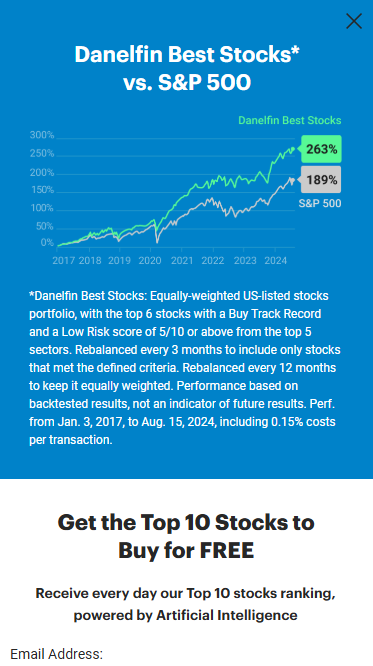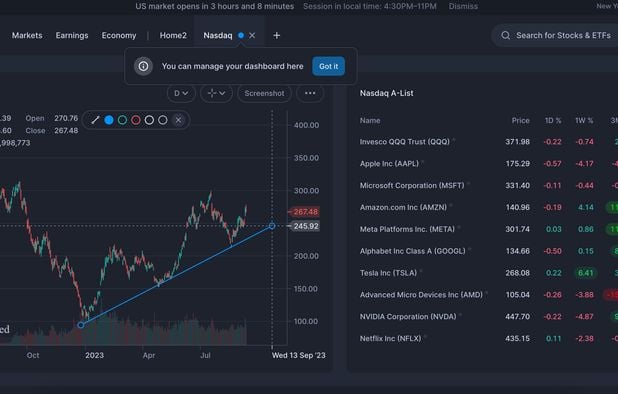20 Excellent Ideas For Selecting AI Stock Trading Platform Websites
20 Excellent Ideas For Selecting AI Stock Trading Platform Websites
Blog Article
Top 10 Tips When Considering Ai And Machine Learning Models On Ai Trading Platforms
It is crucial to evaluate the AI and Machine Learning (ML) models used by trading and stock prediction platforms. This will ensure that they provide accurate, reliable and actionable insights. A model that is poor-designed or exaggerated can result in inaccurate predictions as well as financial loss. These are the top 10 suggestions for evaluating the AI/ML models of these platforms:
1. Understand the model's purpose and its approach
Clear objective: Determine whether the model was created to be used for trading in the short term, long-term investing, sentiment analysis, or risk management.
Algorithm disclosure: Determine if the platform discloses which algorithms it employs (e.g. neural networks and reinforcement learning).
Customizability. Assess whether the model's parameters can be tailored according to your own trading strategy.
2. Analyze model performance indicators
Accuracy: Check the accuracy of predictions made by the model and don't solely rely on this measure, since it can be misleading in financial markets.
Accuracy and recall: Examine how well the model identifies real positives (e.g. accurately forecasted price moves) and eliminates false positives.
Risk-adjusted returns: See if a model's predictions yield profitable trades when risk is taken into consideration (e.g. Sharpe or Sortino ratio).
3. Test the Model with Backtesting
Backtesting the model by using previous data lets you evaluate its performance against previous market conditions.
Tests using data that was not previously being used to train: To avoid overfitting, test your model with data that was never previously used.
Scenario analyses: Compare the model's performance under various market scenarios (e.g. bull markets, bears markets high volatility).
4. Be sure to check for any overfitting
Overfitting signs: Look for models that do exceptionally good on training data but poorly on unseen data.
Regularization techniques: Verify whether the platform is using techniques like L1/L2 regularization or dropout in order to prevent overfitting.
Cross-validation - Ensure that the model is cross-validated in order to evaluate the generalizability of the model.
5. Review Feature Engineering
Relevant features: Check if the model uses relevant features (e.g. price, volume sentiment data, technical indicators macroeconomic variables).
Select features: Ensure the system only includes statistically significant features and does not include redundant or irrelevant information.
Updates to features that are dynamic Test to determine whether the model adapts itself to new features, or changes in the market.
6. Evaluate Model Explainability
Interpretability: The model should be able to provide clear explanations for its predictions.
Black-box models can't be explained Beware of systems using overly complex models, such as deep neural networks.
User-friendly insights: Make sure the platform offers actionable insights which are presented in a manner that traders can comprehend.
7. Review the model Adaptability
Changes in the market: Check whether the model is able to adapt to changes in market conditions, for example economic shifts, black swans, and other.
Examine if your platform is updating the model regularly with the latest information. This will improve the performance.
Feedback loops. Be sure to incorporate the feedback of users or actual results into the model to improve it.
8. Be sure to look for Bias and Fairness
Data bias: Ensure that the training data is true to market conditions and is free of biases (e.g. the overrepresentation of particular sectors or time periods).
Model bias: Determine whether the platform is actively monitoring and corrects biases within the model's predictions.
Fairness: Ensure that the model doesn't favor or disadvantage specific sectors, stocks or trading styles.
9. The computational efficiency of an Application
Speed: Determine whether a model is able to make predictions in real time with the least latency.
Scalability: Determine whether the platform has the capacity to handle large datasets with multiple users, without any performance loss.
Resource utilization: Find out if the model uses computational resources effectively.
10. Transparency and Accountability
Model documentation: Make sure that the platform provides complete documentation about the model's structure, its training process as well as its drawbacks.
Third-party Audits: Check whether the model has been independently verified or audited by third organizations.
Error handling: Determine whether the platform is equipped to identify and fix mistakes or errors in the model.
Bonus Tips
User reviews and cases studies Review feedback from users to gain a better understanding of how the model works in real world situations.
Trial period: Test the software for free to test how accurate it is and how easy it is to use.
Customer Support: Verify that the platform provides robust technical support or models-related assistance.
The following tips can aid in evaluating the AI models and ML models available on platforms that predict stocks. You will be able to assess whether they are honest and reliable. They must also align with your goals for trading. Check out the recommended ai chart analysis examples for more info including ai stocks, ai chart analysis, ai stock, ai stock trading app, ai for trading, best ai for trading, trading ai, market ai, stock ai, ai trade and more.
Top 10 Tips To Assess The Transparency Of Ai Stock Trading Platforms
Transparency is an important factor to take into consideration when looking at AI stock prediction and trading platforms. Transparency is essential because it allows users to trust the platform, be aware of the choices made, and check the accuracy. Here are 10 best ways to evaluate the transparency of these platforms:
1. AI Models are explained in depth
Tips: Make sure the platform provides a clear explanation of the AI models and algorithms that are used for predictions.
Why: Users can more accurately assess the validity and limitations of a technology by understanding its underlying technology.
2. Disclosure of Data Source
Tips: Ensure that the platform discloses the sources of data it relies on.
The reason is that knowing the source of information ensures that the platform has reliable and complete data.
3. Performance Metrics, Backtesting and Results
TIP: Ensure there is transparency in the reporting of performance metrics (e.g. rate of accuracy or ROI) and the backtesting results.
Why: Users can verify the efficacy of a platform by looking at its past performance.
4. Notifications, updates and real-time updates
Tip: Check if you receive real-time notifications and updates on trading, predictions or other modifications to the system.
Why: Real-time visibility ensures that users are alert to critical actions.
5. Limitations Communication open
Tip - Check to see if the platform is open about the risks associated with its trading and prediction strategies.
Why: Acknowledging limits builds confidence and allows you to make better choices.
6. Raw Data Access for Users
Tip: Find out if you are able to access raw data or intermediate results that AI models utilize.
Why: Access to raw data allows users to conduct their own analyses and test predictions.
7. Transparency of Costs and Fees
Tips: Ensure that all subscription fees, charges and possible hidden costs are clearly disclosed on the platform.
Transparent pricing creates trust and helps avoid surprises.
8. Regularly scheduled reporting and audits
Examine if there are regular reports on the platform or third-party auditors verify its operation and its the performance.
Why: Independent Verification adds credibility, and also ensures accountability.
9. Explainability and Predictions
Tips Check to see the information on how the platform makes certain predictions and recommendations (e.g. features with priority and decision trees).
Why Explainability allows users to be able to comprehend AI decisions.
10. User Feedback and Support Channels
Tips: Find out whether there are channels of communication that allow users to give feedback and also receive assistance. Also, check whether it is clear in its response to concerns expressed by users.
Why: Responsive communication demonstrates the commitment to transparency as well as user satisfaction.
Bonus Tip: Regulatory Compliance
Be sure that the platform follows and is transparent about its compliance with the financial regulations. This increases transparency and credibility.
When you evaluate these functions, you can determine if the AI trading platform or stock prediction is transparent. You will then be able to make well-informed decisions and have confidence in the capabilities of AI. Read the top consultant for ai share trading for site examples including free ai tool for stock market india, ai software stocks, ai tools for trading, ai options trading, ai trading tool, ai software stocks, ai stock price prediction, ai stock prediction, free ai tool for stock market india, best ai stocks and more.